Have you ever watched your cat gaze longingly out the window, seemingly yearning for the freedom of the great outdoors? From the bustling traffic on the streets to the lurking predators in the shadows, the great outdoors isn’t always as friendly as it seems for our feline friends. It’s tempting to let them explore outside, but is it truly safe for them? What exactly are the risks, and how do they impact our beloved cats? In this article, we’ll dive into the 11 reasons why having an outdoor cat might not be a good idea and how you can ensure their safety and happiness.
1. The Risk of Traffic Accidents
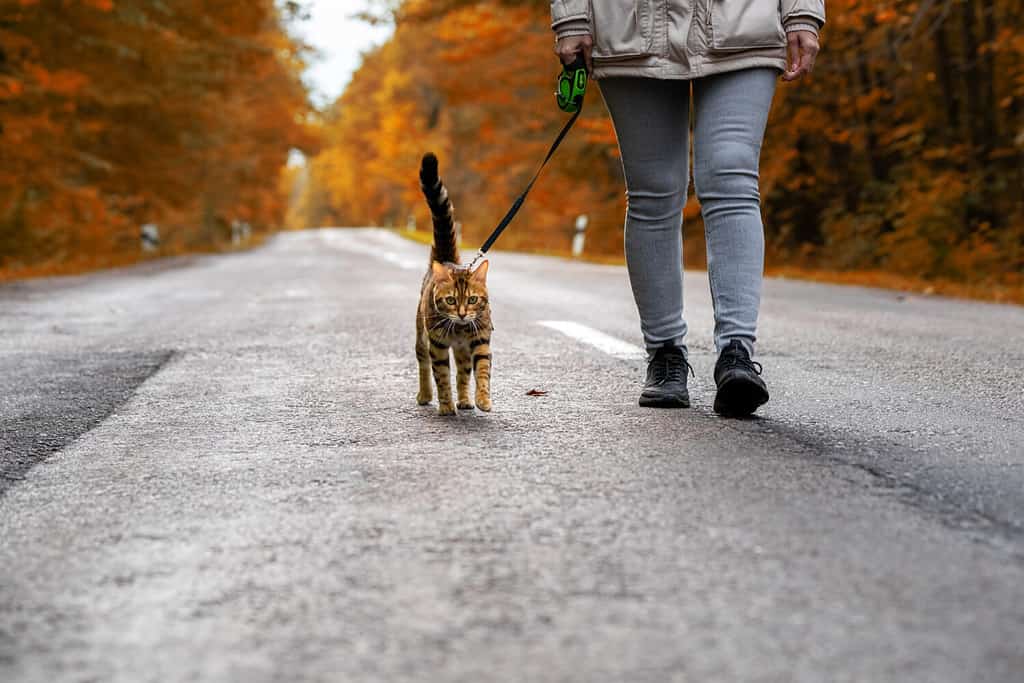
Unfortunately, outdoor cats can get involved in a traffic accident.
©Amerigo_images/Shutterstock.com
One common misconception is that only busy roads pose a threat to our wandering cats. However, even the quietest streets can become a danger zone. Cats, due to their curious and unpredictable nature, can suddenly dash across a road, leading to tragic accidents.
Traffic Accident Risks for Cats
| Location | Risk Level | Common Incidents |
|---|---|---|
| Busy Roads | High | Fast-moving vehicles; less time for drivers to react |
| Quiet Streets | Moderate | Unexpected dashes; cars not anticipating animals |
| Residential Areas | Moderate | Cars pulling out of driveways; slow-moving vehicles |
| Countryside Roads | Moderate | Less traffic but higher speeds; fewer street lights |
| Alleyways | Low | Mostly pedestrian, but occasional vehicles |
2. Exposure to Poisons
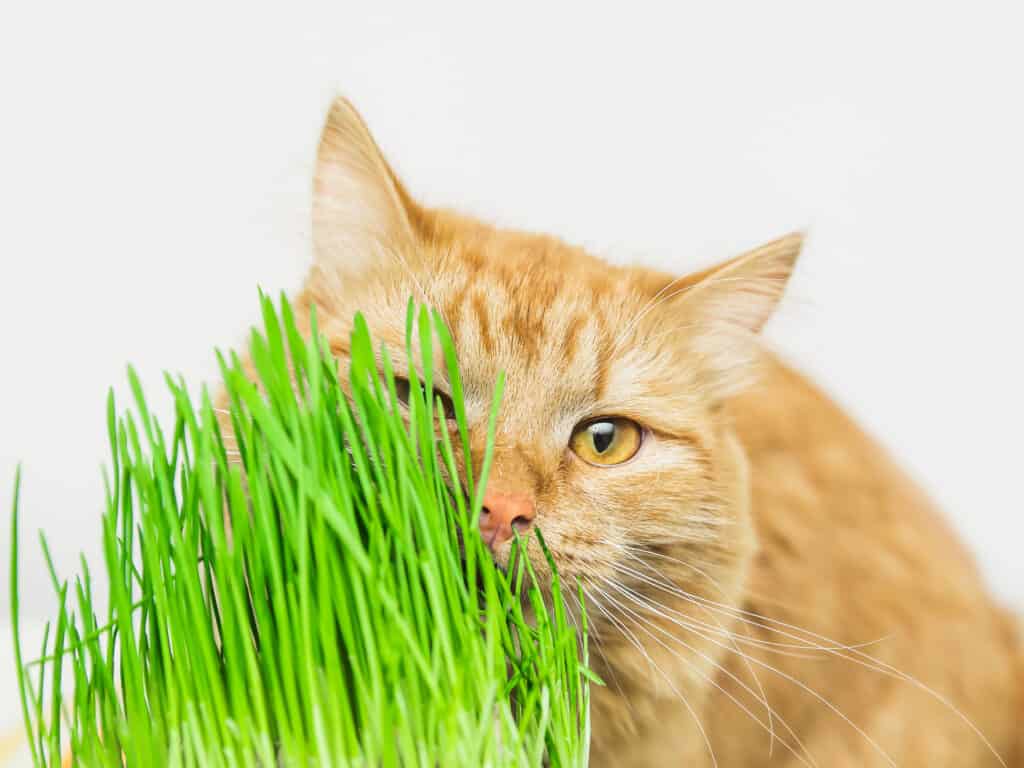
Some plants are toxic to cats!
©Irzhanova Asel/Shutterstock.com
When we think of letting our cats roam outdoors. We often envision them frolicking in the grass, chasing butterflies, and basking in the sun. But, what we might not consider are the lurking dangers, especially the toxic substances that can harm our beloved pets. The outdoors is riddled with potential hazards, and cats are known for their curiosity, and this very trait can sometimes lead them into trouble.
Toxic Substances
- Antifreeze: Even a small amount can be lethal. Cats are drawn to its sweet taste, but ingestion can lead to kidney failure.
- Rodent poisons: These are designed to kill pests. But if a cat consumes a poisoned rodent or the poison directly, it can be fatal.
- Slug and snail baits: These often contain metaldehyde, which can cause seizures in cats.
- Certain plants: Some plants, like lilies and poinsettias, are toxic to cats. They can cause severe health issues if ingested.
- Pesticides and herbicides: These chemicals can be harmful if cats come into contact with them or ingest them.
Even if we don’t use these substances in our own gardens, our neighbors might, and, as cats are known to wander, they can easily come into contact with these dangers.
3. Threat From Other Animals
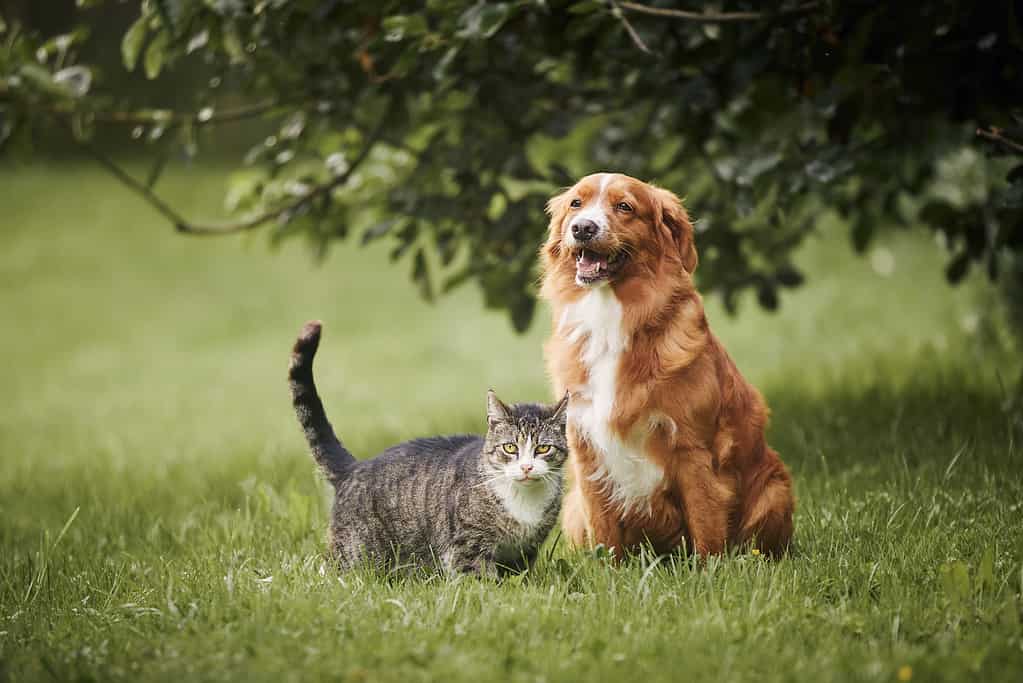
Another reason it’s not a good idea to have an outdoor cat is that other animals can harm them.
©Chalabala/iStock via Getty Images
The outdoors is also home to various animals that can pose a threat to our beloved cats.
- Coyotes: These predators can view cats as an easy meal, especially in areas where their habitats overlap with residential zones.
- Hawks and large birds: A swooping bird of prey can snatch up a small cat in an instant.
- Other cats: Not all cats get along. Territorial disputes can lead to nasty fights.
- Dogs: While many dogs are friendly, some might chase or even attack cats.
- Other wild animals: In rural areas, animals like raccoons, foxes, or even snakes can be a threat.
It’s essential to remember that wild animal behavior is unpredictable. Even if an encounter doesn’t lead to a physical altercation, the mere stress of such encounters can be harmful to cats.
4. Environmental Concerns
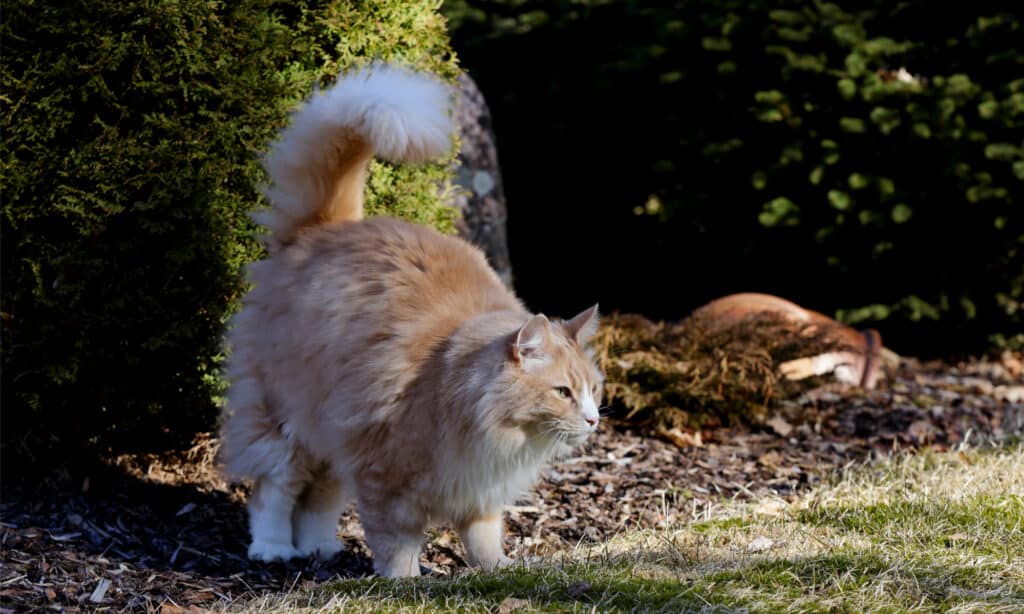
There are many environmental consequences to letting cats outside.
©iStock.com/undefined undefined
When cats get the freedom to go outside, they may harm plants and disrupt local ecosystems.
Environmental Consequences
- Disturbance to wildlife: Cats, being natural hunters, can lower the numbers of birds and small mammals in the area.
- Gardens as litter boxes: Cats sometimes see neighbors’ gardens as their own toilets. This may cause unwanted disputes.
- Spread of diseases: If a cat roams outside, it might pick up diseases and spread them to other animals or even bring them home.
- Noise: Cats are pretty loud, especially at night. You might hear cats fighting, disturbing the peace of your neighborhood.
- Overpopulation: Unneutered cats can contribute to the increasing population of stray and feral cats.
Moreover, there can be more conflicts with neighbors and community members when cats go to their yards, dig up gardens, or prey on local wildlife. We’ll go over some of these issues in more detail below.
5. Exposure to Diseases
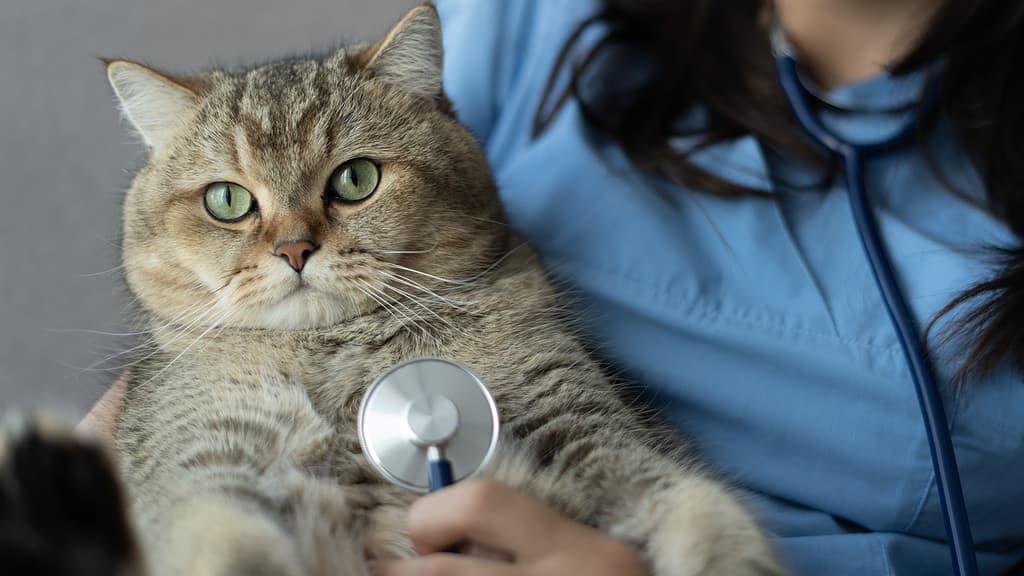
Outdoor cats are more likely to catch diseases.
©izzetugutmen/iStock via Getty Images
Allowing your cat to explore the outside world may feel like giving them an exciting experience, but this also opens the door for them to catch many diseases. Cats that love outdoor adventures are more likely to get diseases like FIV and FeLV. While not as common, rabies is another disease they might get. Additionally, there’s the annoyance of parasites like ticks, fleas, and worms. These little pests don’t just bother your cat but might also carry diseases themselves!
6. Malicious Intent From People

Some people may attack your cat!
©Ozge Emir/iStock via Getty Images
It’s a heartbreaking reality, but not all people are kind to cats. Some might purposely hurt or even poison cats because they don’t like them or just because of simple cruelty. If you have a cat, it’s essential to know about these dangers and think about ways to keep your pet safe.
| Types of Malicious Acts | Frequency | Ways to Prevent |
|---|---|---|
| Poisoning | Common | Keep cats indoors at night |
| Physical Harm | Occasional | Supervise outdoor playtime |
| Trapping | Rare | Educate neighbors about your cat |
| Shooting | Very Rare | Ensure cats stay within property limits |
| Theft | Occasional | Microchip and collar with ID |
7. Overpopulation Concerns

While kittens are adorable, having an outdoor cat may lead to overpopulation.
©Sckrepka/iStock via Getty Images
Cats are known for their rapid reproduction rate, and when cats are allowed to roam freely, there’s a higher chance of them mating and contributing to the overpopulation of stray and feral cats. Overpopulation not only poses challenges for communities but also leads to many cats living without proper care or shelter. To avoid this, the main thing to keep in mind is that you should spay or neuter your cat!
Reproduction Rates of Cats
| Status | Number of Kittens Per Year |
|---|---|
| Non-spayed/Non-neutered | Up to 12-15 kittens |
| Spayed/neutered | 0 kittens |
8. Risk of Getting Lost or Trapped

Another reason it’s not a good idea to have an outdoor cat is that your cat may get lost or trapped.
©Africa Studio/Shutterstock.com
Every cat owner’s nightmare is the thought of their beloved pet getting lost or trapped. The emotional toll on owners when their cats go missing is immeasurable. We’ve all heard stories of cats wandering off and getting trapped in the most unexpected places. While some of these tales have happy endings, others serve as cautionary tales for all cat owners.
Common Places Where Cats Get Trapped
- Garages and sheds
- Under car hoods, especially during colder months when the engine is warm
- In trees or high places from which they can’t easily descend
- Inside pipes or drains
- Behind walls or in crawl spaces
Not knowing where your cat is or if it’s safe can cause a panicked feeling in every cat owner. So, if you’re thinking of letting your cat out, you need to know about these dangers.
9. Impact on Wildlife

Cats may affect the local ecosystem.
©iStock.com/t:undefined undefined
When cats spend time outside and follow their hunting instincts, they can affect the animals around them. Birds, lizards, and even small mammals like mice often become victims of house cats. This has raised concerns by many environmentalists because hunting can upset the local ecosystem.
Animals Caught by Outdoor Cats
- Birds: Mainly the ones that nest on the ground.
- Small mammals: Creatures like mice and voles.
- Reptiles: This includes lizards and small snakes.
- Amphibians: Cats can easily catch frogs and toads.
- Insects: Butterflies, beetles, and other beneficial insects.
10. Shortened Lifespan

One of the biggest reasons it’s not a good idea to have an outdoor cat is that its lifespan will be drastically reduced.
©Lubo Ivanko/iStock via Getty Images
It’s a heart-wrenching fact, but outdoor cats generally have a shorter lifespan compared to their indoor counterparts. This is because while the outdoors offers a world of excitement and stimulation, it also presents numerous risks, as highlighted in this list.
Average Lifespan of Cats
| Environment | Average Lifespan | Contributing Factors |
|---|---|---|
| Indoor | 10-20 years | Controlled environment, less exposure to dangers |
| Outdoor | 2-5 years | Exposure to predators, accidents, diseases, and harsh weather |
11. Increased Risk of Fights
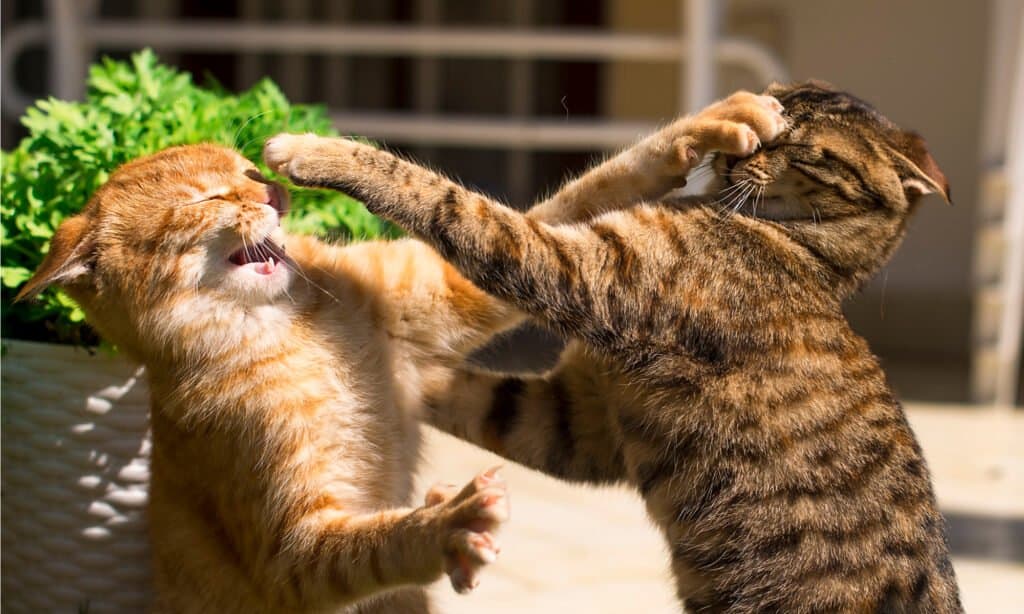
A final reason it’s not a good idea to have an outdoor cat is that your cat may get into some nasty fights.
©Mariya Ilmaz/Shutterstock.com
Cats are territorial creatures by nature, and when they roam outdoors, they often cross paths with other felines, leading to potential confrontations. Overlapping territories (especially in territory-marked areas) results in fights with other cats that not only cause physical harm but also stress and anxiety for our furry companions.
Reasons Behind Territorial Confrontations
- Overlapping territories: Cats are territorial, and when two cats claim the same area, they may fight.
- Competition for resources: Cats may fight over food, shelter, or for potential mates.
- Unneutered males: These cats are more likely to be aggressive and fight over territory or for females.
- Fear and stress: A cat may attack if it feels threatened or stressed by any person or animal.
- Protecting kittens: A mother cat will fiercely protect her kittens, and this can lead to confrontations.
Tips for Those Who Still Want to Let Their Cats Outside
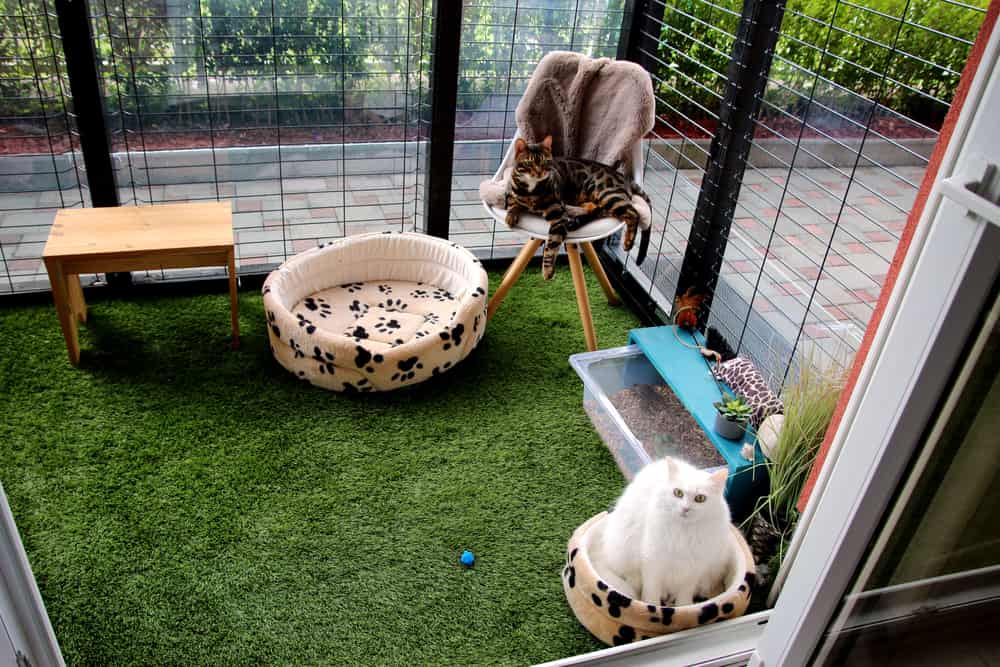
A catio is a great way to allow some supervised outdoor time for your cat.
©TheCats/Shutterstock.com
It’s clear that many cats want to see what’s beyond the window pane, and many cat owners think it’s good to give them that freedom. If you’re thinking about letting your cat step outside, here’s how you can make it a safe venture.
Safe Steps to Let Your Cat Explore the Outdoors
- Supervision: When your cat’s outside, always be around to make sure they don’t get into trouble or stray too far.
- Safe zones: You might want to invest in something like a cat patio or special enclosure. This way, they can feel the wind and see the sights without facing the usual dangers.
- Health checks: Regular visits to the vet are key. Keep their shots updated and always check their health status.
- Spaying/Neutering: Getting your cat spayed or neutered is a must; it tones down aggression and that urge to wander around too much.
- Identification: A collar with a clear ID tag is great, but you might also want to think about microchipping your cat; it’s just an extra layer of safety.
Following these above steps ensures your cat gets to scratch that outdoor desire but without the usual risks that come with such adventures. At the end of the day, keeping your cat safe and sound should be your number one priority!
Summary of the Reasons It’s Not a Good Idea to Have an Outdoor Cat
| Number | Reason |
|---|---|
| 1. | The risk of traffic accidents |
| 2. | Exposure to poisons |
| 3. | Threat from other animals |
| 4. | Environmental concerns |
| 5. | Exposure to diseases |
| 6. | Malicious intent from people |
| 7. | Overpopulation concerns |
| 8. | Risk of getting lost or trapped |
| 9. | Impact on wildlife |
| 10. | Shortened lifespan |
| 11. | Increased risk of fights |
The photo featured at the top of this post is © Russamee/Shutterstock.com
Thank you for reading! Have some feedback for us? Contact the AZ Animals editorial team.







